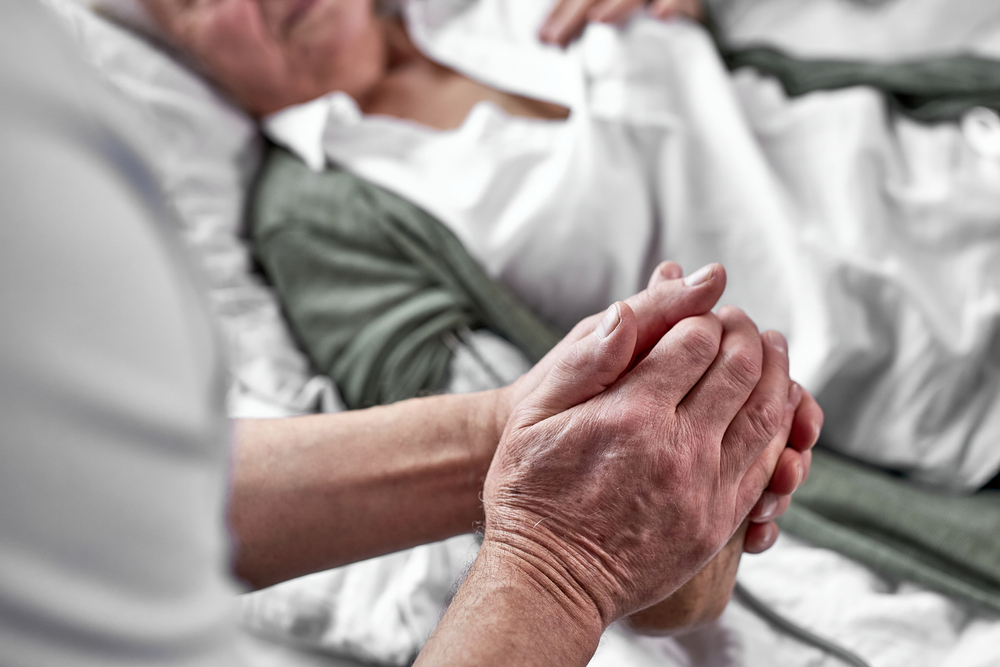As we approach the end of life, our bodies undergo several physical changes. These changes, though they can vary from person to person, are common signs that the body is preparing for the end. According to health authorities like the NHS, understanding these signs can help families and caregivers provide better care and comfort during a terminally ill person’s final hours or days. This article will explore the nine key physical changes that occur as someone approaches the end of life.
Recognizing the Signs of End of Life

When a loved one is terminally ill, it’s vital to know what to expect during their final days. Recognizing the physical changes that occur can prepare you emotionally and allow you to provide the necessary support. These changes often begin subtly and can continue over hours or even days. Let’s break down the nine most common physical signs that someone is approaching the end of their life.
1. Constant Drowsiness and Fatigue
One of the most noticeable signs of nearing the end of life is extreme fatigue. The body’s energy levels drop significantly, making the person feel drowsy or tired almost constantly. They may sleep for long periods or even become unresponsive at times.
It’s crucial to respect their need for rest. Encourage them to sleep and, if possible, help them change their position every few hours to prevent discomfort. Making sure they are comfortable is a top priority.
2. Loss of Appetite
As the body begins to shut down, it no longer requires the same amount of energy, leading to a decreased appetite. At this stage, eating and drinking may become challenging or even uncomfortable. The person may lose interest in food entirely.
In such cases, consulting a healthcare professional can help you explore alternative ways to keep them nourished and hydrated. If they are unable to drink, applying lip balm can prevent their lips from drying out and make them more comfortable.
3. Changes in Breathing Patterns
Another significant sign that someone is approaching the end of life is a change in their breathing patterns. According to the NHS, the breathing may become irregular, with alternating shallow and deep breaths. Sometimes there may be a pause between breaths, known as Cheyne-Stokes respiration.
This change can also result in noisy, rattling breaths due to mucus buildup. While this may sound alarming, it is a natural part of the process. Repositioning the person may help ease their breathing, making them more comfortable.
4. Hallucinations and Confusion

Chemical imbalances in the brain caused by medications or the body’s natural decline can lead to confusion or hallucinations. The person may see things that aren’t there or become disoriented about their surroundings.
This experience can be distressing for loved ones, but maintaining a calm demeanor is essential. Gently reminding the person where they are and who you are can help ground them. Speaking softly and with reassurance can reduce feelings of fear or anxiety.
5. Drop in Body Temperature
As the end draws near, blood circulation is reduced, focusing on vital organs and leaving the extremities, such as the hands, feet, and legs, with less blood flow. This causes the skin to feel cold and often appear pale, with mottling or blue-purple patches.
Offering a blanket can provide comfort even though the person may not feel cold. Keeping them physically comfortable at this stage is key to helping them feel peaceful.
6. Changes in Toilet Habits

Due to the reduced intake of food and liquids, the body produces less waste. This results in decreased bowel movements and urination, which is normal at this stage.
However, in some cases, a person may lose control of their bladder or bowel. While it may be distressing, it is a common part of the dying process. You may need to seek the assistance of a caregiver to manage these needs with dignity and care.
7. Muscle Weakness
As the body weakens, the muscles lose strength, making it difficult for the person to carry out simple tasks such as holding a glass or changing position in bed. This is a natural part of the body’s decline and can be very frustrating for the individual.
To ease their discomfort, offer assistance by helping them with these tasks. Gently supporting them can make them feel more comfortable and allow them to conserve their limited energy.
8. Decreased Social Interaction
As energy levels decrease, so does the person’s ability to engage socially. They may prefer to withdraw and spend more time resting or in solitude.
It’s important to respect their need for quiet and rest. Plan visits during times when they seem more alert and able to interact, and keep the conversations light and supportive. Being present, even in silence, can offer comfort during these final days.
9. Other Bodily Changes

As death approaches, the body’s vital signs often change noticeably. Blood pressure tends to drop, while the heart rate can become irregular or faint. The pulse may be weak or difficult to detect, signaling that the body is nearing the end of its natural life cycle.
These changes, while difficult to witness, are natural indicators that the body is beginning to shut down completely. A healthcare professional may be able to guide you through these final hours, offering pain management and comfort to ensure the person experiences a peaceful transition.
Providing Comfort in the Final Days
Watching a loved one reach the end of their life can be an incredibly emotional experience. While the physical changes they undergo may seem distressing, they are a natural part of the body’s shutdown process. By understanding these signs and knowing how to respond, you can provide comfort and support during this difficult time.
Ensuring that your loved one is comfortable, whether through repositioning them, offering blankets, or simply being present, can make all the difference in their final days. Each of these physical changes is part of the body’s preparation for the end of life, and while they may be hard to witness, they are the body’s way of gently letting go.
Conclusion: Recognizing and Accepting the Signs
The end-of-life process involves various physical changes, each signaling the body’s gradual shutdown. Recognizing these signs can help loved ones better prepare and provide comfort during the final hours or days. From changes in breathing patterns to reduced social interaction, these symptoms are all part of the natural progression of dying.
By understanding these signs and focusing on keeping your loved one comfortable, you can ensure their final moments are peaceful and filled with compassion. Though difficult, this knowledge can bring a sense of calm during an otherwise emotional and challenging time.